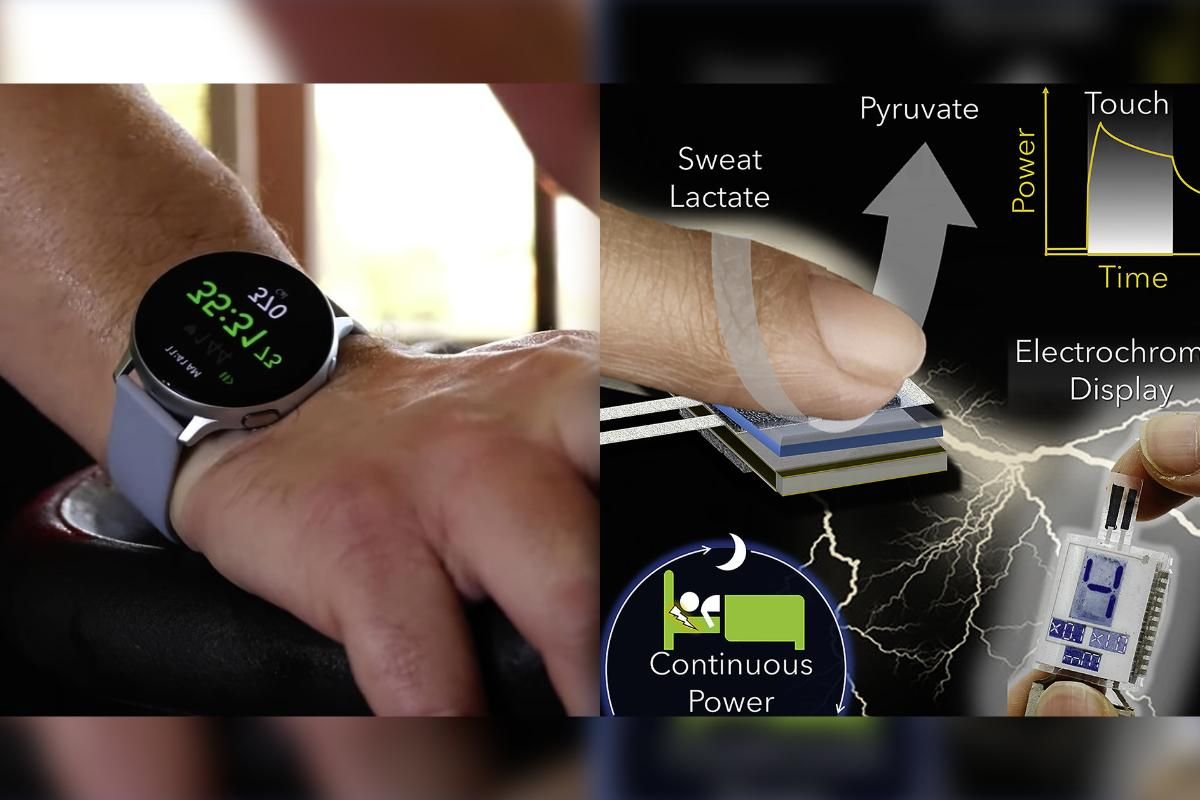Scientists at the University of California, San Diego are researching a new technology that allows a thin, flexible strip to harvest bioenergy from sweat, and turn that into electricity to power wearables. This electricity could, in theory, be then used to charge a wide variety of electronic gadgets, such as smartwatches as an example.
The scientists have explained (via PhoneArena) that previous bioenergy harvester technologies were based on bodily movements, which isn’t very efficient as only 1 percent of the mechanical energy input can be used to charge electronic devices. Needless to say, that technology is still under development and research as it is currently impractical and inefficient.
The new “biofuel cell bioenergy harvesters” can do the following, at their current stages:
- A novel bioenergy harvester that continuously scavenges energy from human passive sweat
- Record high energy return on investment based on lactate biofuel cells
- Biofuel cells harvesting ∼400 mJ/cm2 of energy during sleep without any activity
- Harvesters can power an integrated sensing system with dedicated displays
The great thing about this new technology is that it can generate ∼400 mJ/cm2 of energy during sleep without any activity. This effectively means that any smartwatch and other wearable gadgets could be charged while simply wearing it. The charge at this time isn’t enough to power today’s technology devices, but there is a possibility that it could, in the future. In theory, the more you sweat, the more power can be generated to charge up a device.
The technology has a great potential for creating self-sustainable and independent electronics systems in the future, which would have a lot of use in a wide variety of fields such as tracking healthcare and wellness. It remains to be seen how this technology will improve over the years to be sufficient to charge devices that require a lot more power on a daily basis.
Eventually, these new sensors wouldn’t be just placed on people’s fingers, there is a potential to make it into gloves and other wearable products:
“We want to make this device more tightly integrated in wearable forms, like gloves… We’re also exploring the possibility of enabling wireless connection to mobile devices for extended continuous sensing. There’s a lot of exciting potential.”
This is just a very brief, summarised version of the actual research. If you would like to find out more about it in much more detail, you can find it here.

